#great migration
Text
The Great Migration & "The Negro in the city" lantern slides, 1922?

Women at dressmaking class, St. Mark's Church, Chicago, 1922?
This set of lantern slides documents the daily life of African Americans during the early years of the Great Migration from the rural American South, as well as outreach activities conducted by the Methodist Episcopal Church (MEC) to assist them with finding work and social services. The first slides show scenes of Black sharecroppers picking cotton and processing sugar. Other slides show African Americans at work in northern cities.
A majority of the slides show African American Methodist Episcopal church buildings in cities, such as Baltimore, Chicago, Dallas, New York, Philadelphia, and Washington, D.C., as well as community houses run by the MEC. Other slides show African Americans engaged in job training, such as sewing and dressmaking, and in worship and recreational activities. More information from the Newberry catalog

Congregants at morning service, East Calgary Methodist Episcopal Church, Philadelphia, Pennsylvania, 1922?
In “The Great Migration, Reconsidered,” scholars Dr. Lionel Kimble, Dr. Courtney Pierre Joseph, and Dr. Matthew Cressler examine the complex legacy of this period.
youtube
Dr. Joseph notes that many Black families did not stay in the original city they arrived in, but continued to move around the country. “Black people are migratory and they move a lot to where best suits their needs and desires… Voting with your feet, being able to go where your voice can be heard.” These lantern slides show us an early snapshot of the Great Migration across the nation, some people on their first stop of many, with images of labor, family, and hope.
View "The Negro in the city" lantern slides
Browse all of Newberry Digital Collections
#newberry library#great migration#lantern slides#black history#libraries#archives#collection stories#chicago
28 notes
·
View notes
Photo


Heritage, signage, and language united.
In 500, Mark Bradford uses caulk to repeat the text of a 1913 advertisement on a grid of painted and oxidized paper on wood panels. The notice seeks five hundred families to inhabit the all-Black settlement of Blackdom, New Mexico, a site that had approximately 150 residents during the early twentieth century until the Great Depression, at which point it was largely uninhabited.
This wanted ad appeared in The Crisis, a quarterly magazine for the National Association for the Advancement of Colored People (NAACP), to draw people looking for new opportunities across the country. Knowing only a few details about the migration of his mother’s family to Los Angeles, Bradford found great resonance with the story of Blackdom: a story of those searching for new possibilities and building community with and for other Black people.
See this work by #MarkBradford in #GreatMigrationBkM through June 25.
🖼️ Mark Bradford (born Los Angeles, California, 1961; based in Los Angeles, California). 500, 2022. Mixed media on sixty panels, each 22 × 28 in. (55.9 × 71.1 cm). Courtesy of the artist and Hauser & Wirth. Brooklyn Museum. (Photo: Jonathan Dorado) → Sim Canetty-Clarke, © Mark Bradford, Courtesy the artist and Hauser & Wirth
#Brooklyn Museum#brooklyn#museum#art#Mark Bradford#GreatMigrationBkM#great migration#the great migration#blackdom#new mexico#naacp#los angeles#heritage#artist#great depression
52 notes
·
View notes
Text

His grandmother gave him the nickname "Muddy" at an early age because he loved to play in the muddy water of nearby Deer Creek. Muddy grew up in the cotton country of the Mississippi Delta on the Stovall plantation near Clarksdale, Mississippi. He taught himself to play harmonica and played guitar simply, yet powerfully, proving that three chords played rhythmically and loudly could be as expressive as any tune with more notes and chords. "Waters" was added years later, as he began to play harmonica and perform locally in his early teens.
He had his first introduction to music in church and by the time he was 17 he had purchased his first guitar. "I sold the last horse that we had. Made about fifteen dollars for him, gave my grandmother seven dollars and fifty cents, I kept seven-fifty and paid about two-fifty for that guitar. It was a Stella and people ordered them from Sears-Roebuck in Chicago."
As a young man, he drove a tractor on the sharecropped plantation, and on weekends he operated the cabin in which he lived as a “juke house,” where visitors could party and drink moonshine whiskey made by himself. He eagerly absorbed the classic Delta blues styles of Robert Johnson, Son House, and others while developing a style of his own.
Muddy Waters was born McKinley Morganfield and died on April 30, 1983 at the age of 70.
#muddy waters#love#music legend#delta blues#chicago blues#musician#guitars#harmonica#great migration#black lives#chicago#mississippi#sharecropper#plantation#sears roebuck
46 notes
·
View notes
Text
5 notes
·
View notes
Text
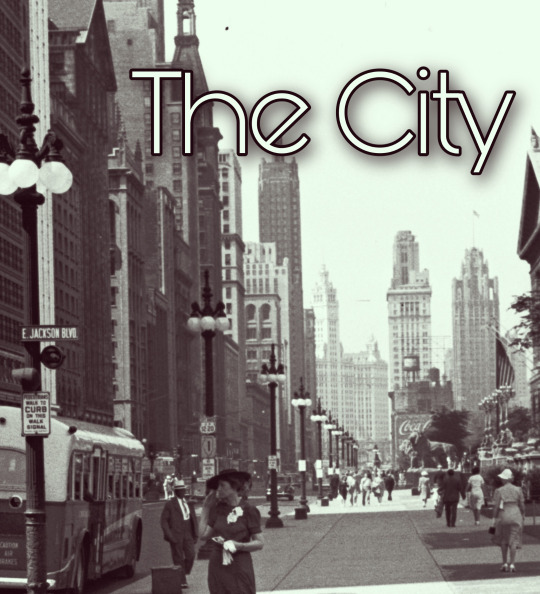
An amazing thing happened when the Great Migration took freed slaves and their descendants into the urban areas of the North and Midwest. They took their music with them…then they married it with the big orchestration known as “Big Band” that was already emerging and BOOM! Jazz, Swing, and the Blues was born. Shuffle the foundations of modern R&B and Rock and Roll…truly an American creation…right here:
#apple music#music#spotify#radiovsl#black history is american history#black history matters#black history facts#jazz history#urban life#black music#1920s music#1930s music#great migration#1940s music
4 notes
·
View notes
Photo
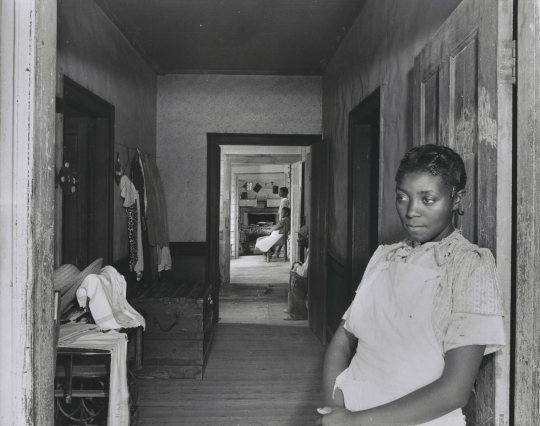
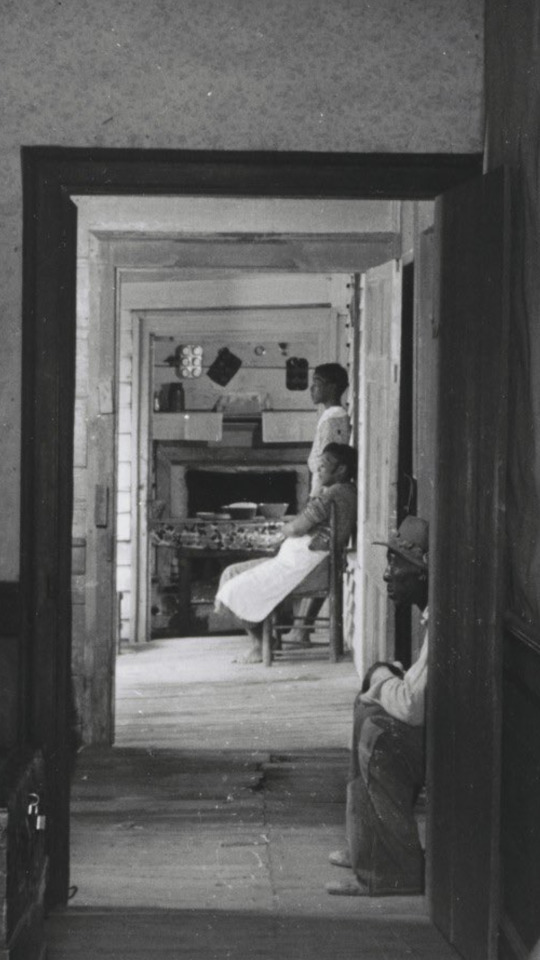
Jack Delano, Interior of Negro rural house. Greene County, Georgia, 1941
17 notes
·
View notes
Photo

(via GIPHY)
7 notes
·
View notes
Text

Gotta LOVE twitter users not enterning tumblr because of the
Cringe
4 notes
·
View notes
Text
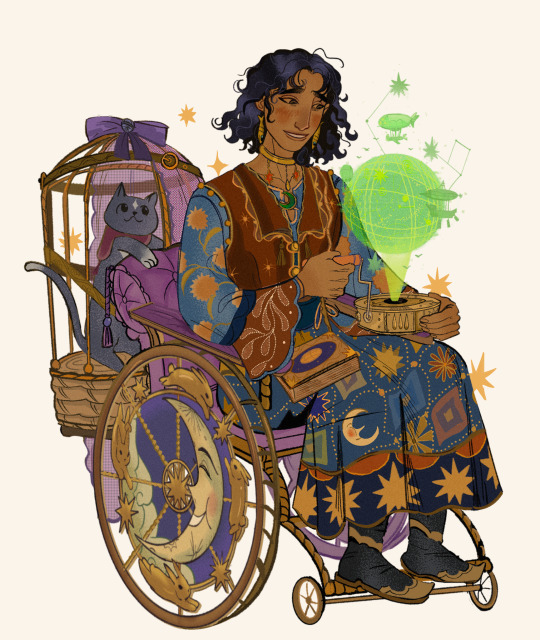
Stargazer, Stargazer
15K notes
·
View notes
Text
#animal behavior#australia#biodiversity#candice gaukel andrews#cetaceans#climate change#conservation#drones#environment#global warming#gray whales#great migration#hummingbirds#humpback whale#kelp#mexico#migrations#monarch butterfly#nathab#natural habitat adventures#nature#nature video#photography#right whale#science#science and environment#scientific research#sierra madre#spy camera#video
0 notes
Text
Ok, so I've read everyone's tags and notes on my previous poll. I've taken them into consideration and I'm now prepared to offer.…
11K notes
·
View notes
Photo


Mementos, memories, and musings on Mississippi.
Shelves lined with canned and pickled foods and the improvisational gospel music of his band, the Black Monks, are just two examples of the ways Theaster Gates Jr. shares his memories of childhood summers spent in Mississippi. The Double Wide (shown here), which the artist made using salvaged old materials from a barn in Indiana and pine flooring from New York’s Park Avenue Armory, represents an experience of dislocation while summoning the tastes, feelings, and sounds of the South.
Gates Jr.’s work in A Movement in Every Direction: Legacies of the Great Migration creates a space for our physical and spiritual senses that preserves and summons the tastes, feelings, and sounds of the South.
See The Double Wide and more of the artist’s artwork in #GreatMigrationBkM through June 25.
📷 Theaster Gates Jr. (born Chicago, Illinois, 1973; based in Chicago, Illinois). The Double Wide, 2022. Spruce framing, armory flooring, metal roofing exterior, Mississippi reliquary, tar, pickled goods, bronze sculpture, two-channel video (color, sound): 6 min., 18 sec. and 2 min., 2 sec., dimensions variable. Courtesy of the artist. Brooklyn Museum. (Photo: Jonathan Dorado) → Sara Pooley
#Brooklyn Museum#brooklyn#museum#art#exhibition#Theaster Gates Jr#GreatMigrationBkM#great migration#mississippi#artist
27 notes
·
View notes
Text
0 notes
Text
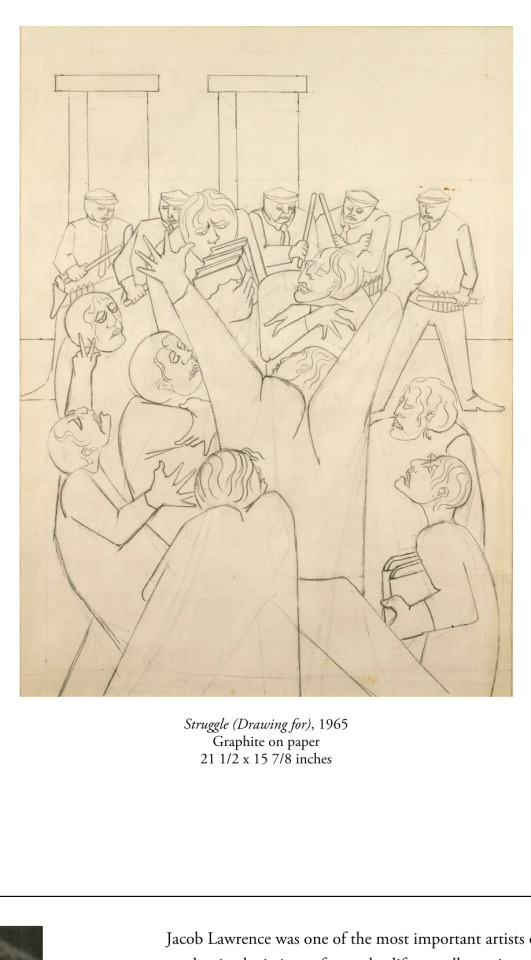



0 notes
Photo

(via GIPHY)
0 notes
Text
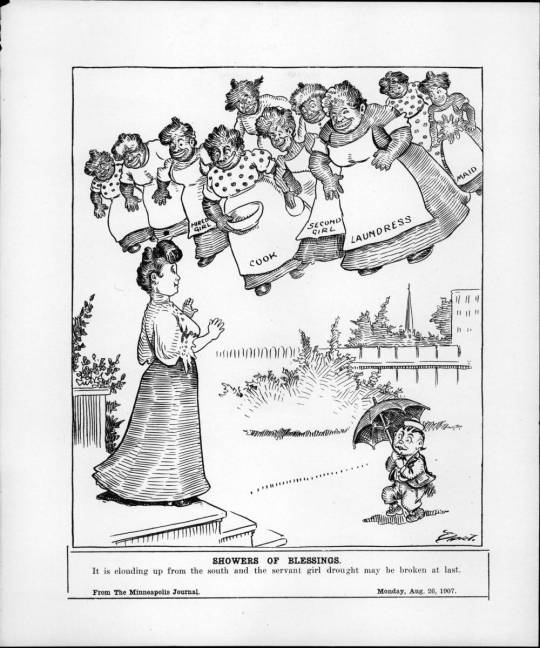
Showers Of Blessings
August 26, 1907
A cloud of racist stereotypes of Black women descend from the sky into Minnesota wanting work as Cook, Laundress, Maid, etc. A gopher looks on with an umbrella.
The caption reads "It is clouding up from the south and the servant girl drought may be broken at last."
A Minnesota labor leader had gone into the south seeking African-American women who would be willing to work as servants in Minnesota.
From Hennepin County Library
Original available at: https://digitalcollections.hclib.org/digital/collection/Bart/id/6738/rec/230
0 notes